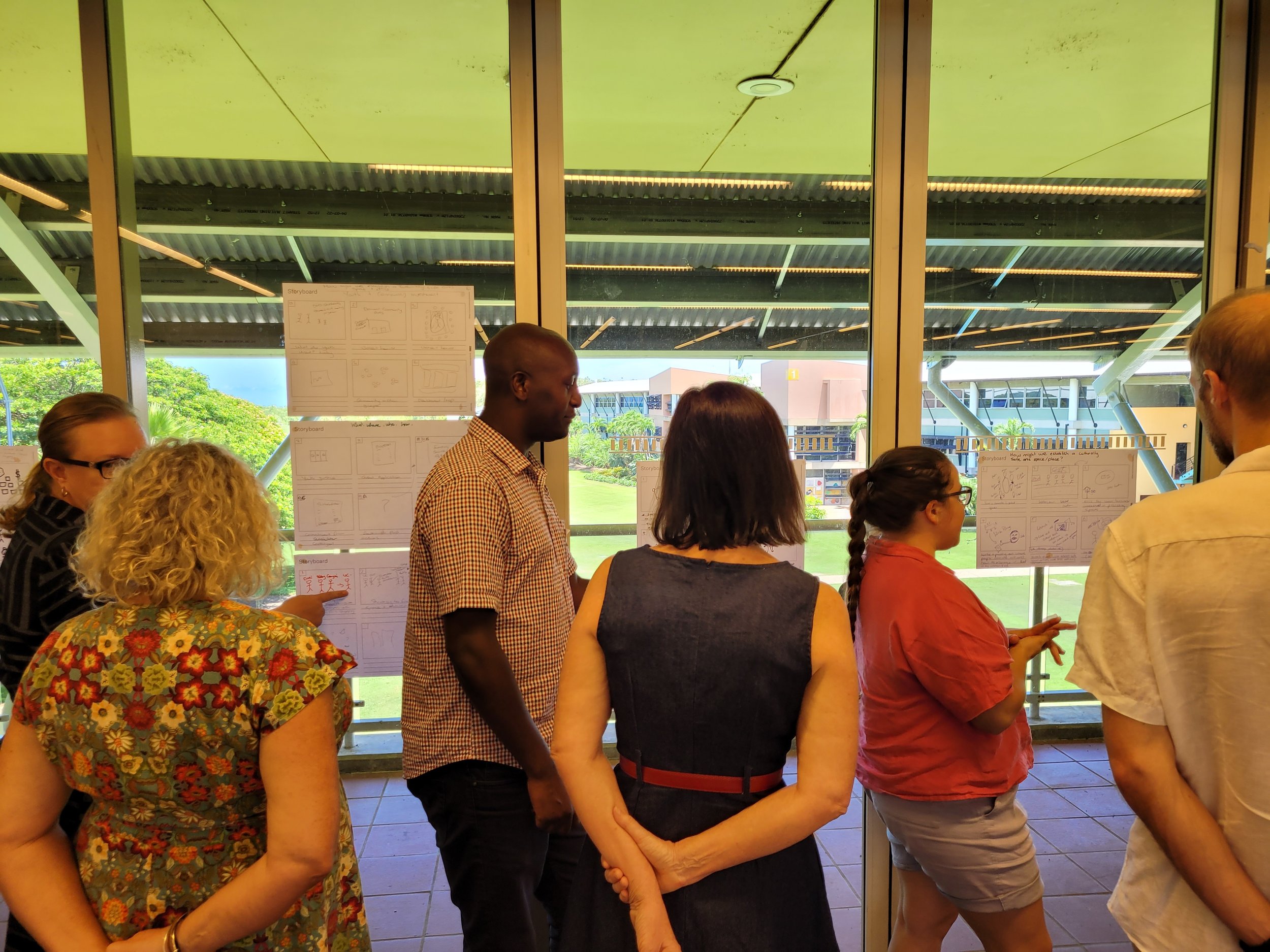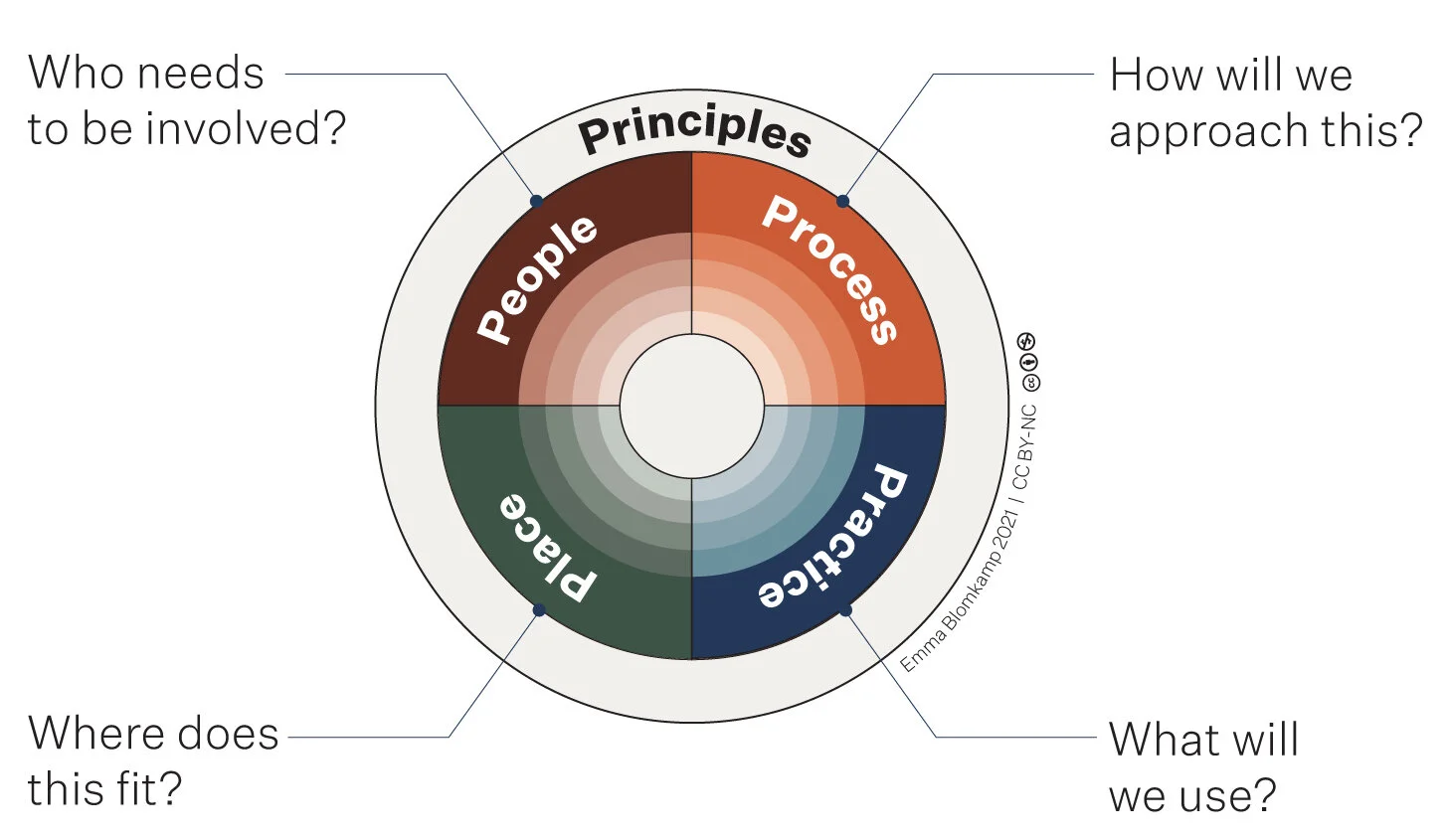
Co-Design Maturity Model
Emma Blomkamp’s Co-Design Maturity Model is a strengths-based framework for assessing individual and team capability as well as organisational maturity in co-design.
Why it exists
The Co-Design Maturity Model has been developed and tested to:
Raise awareness about what co-design actually involves. The model shows the complexity of co-design practice. This can be helpful to explain why you can’t just grab a toolkit or attend a two-hour seminar then lead a co-design process, or why you might be struggling to implement or grow co-design practice in your organisation.
Identify individual skill level and learning needs. What are your strengths and development opportunities as a co-design practitioner? For those undertaking individual assessments, this is complemented by recommendations on opportunities for learning and development.
Assess team readiness and contextual conditions for co-design. To understand the extent to which co-design is possible in a particular environment; to identify enablers and barriers, in order to create the conditions for co-design.
Understand organisational and sectoral maturity for co-design. Taking into account capabilities and conditions, to identify how well an organisation supports and spreads co-design practice, including learning from relevant fields. The aim is to help embed and evolve co-design across the systems we work within.
What it is
The model presents five overall levels of co-design maturity:
Flourish: evolving and spreading co-design practice across the system.
Integrate: adapting and embedding co-design at work.
Apply: using co-design principles and practices in context.
Understand: identifying the main components of co-design and how it can deliver value.
Explore: getting curious about co-design.
These levels are applied to each core domain of co-design practice, from the Systemic Design Practice Wheel:
People: relationships and participation
Place: context and conditions
Practice: core capabilities
Process: planning and stewardship
Principles are not assessed separately, as they are embedded throughout the other domains.
Associated assessment tools go further by appraising levels for several dimensions within each domain. Results are then compiled and analysed by Emma Blomkamp to produce a capability report, with recommendations for ongoing learning and development.
How to use it
Quick test
You can download the Co-Design Maturity Model Overview and Scorecard, to do a quick self-assessment. You can choose to apply this at the level of self, team or organisation.
For each domain, read the level descriptions and note:
Where do you think you are (a) personally?, (b) as a team/group, and/or (c) as an organisation/network?
You may also like to consider:
Where would you like to be?
Where and how might you gain more skills, knowledge and understanding in this domain?
If you are unfamiliar with the domains or unsure about any of the descriptions within the Co-Design Maturity Model Overview, you may wish to read about the Systemic Design Practice Wheel before attempting a self-assessment, or do the assessment with a more experienced peer.
Individual assessment
Emma Blomkamp has recently developed a new iteration of the model and tested it with two client teams and individual participants at the RSD12 symposium. We’re currently applying this model within the application process for Co-Design Practitioners.
Individual co-design capability assessments may soon be offered as a fee-for-service. Enter your details here to go on the waitlist.
Organisational/network assessment
If you are interested in partnering with Emma Blomkamp to develop your own capability or assessment framework, or undergo an organisational assessment, please register your interest here.
Sharing, adaptation, attribution
You are welcome to share and remix or adapt the content on this page and associated links under the Creative Commons license CC BY-NC.
You must give credit to Emma Blomkamp as the creator of the co-design maturity model (and systemic design practice wheel, where relevant). You cannot use the material for commercial purposes (i.e. gain financial compensation from its use). Please contact Emma to discuss licensing options if you’re interested in using it commercially.
Suggested citation: Blomkamp, E. (2022). Co-Design Maturity Model.
Acknowledgements
Emma Blomkamp developed this maturity model in 2022, with visual design by Zenaida Beatson.
It builds on and incorporates previous work, notably Emma’s Systemic Design Practice Wheel, and the ideas of (and, in some cases*, feedback from):
Penny Hagen & Auckland Co-design Lab
KA McKercher*, Beyond Sticky Notes
Nesta & States of Change
TACSI (& LELAN)
Koos Service Design
Stewarding Loss
’Presenting Work’: Alba Villamil*, Benji Mauer*, Danny Spitzberg, Sarah Fathallah
’Coaching Crew’: Luke Craven, Nicole Barling-Luke, Thea Snow
CoDesignCo members*: Sarah Josefsberg, Laura Griffin, KA McKercher, Callan Rowe, Belinda Donald, Alice Howard-Vyse, Jasmine Griffiths, Nicole Barling-Luke, Rich Turner, Belinda Wheeler, Melanie Leggiero, Alba Villamil, Kelly Henderson, Lee Ryan, Marina Moreno, Leah Baxter, Georgina Lewis, Ruth Toomey.
Emma extends a huge thanks to everyone who has contributed to developing and applying this model!
Co-Design Maturity Model (2022) by Emma Blomkamp is licensed under CC BY-NC 4.0




